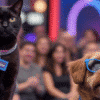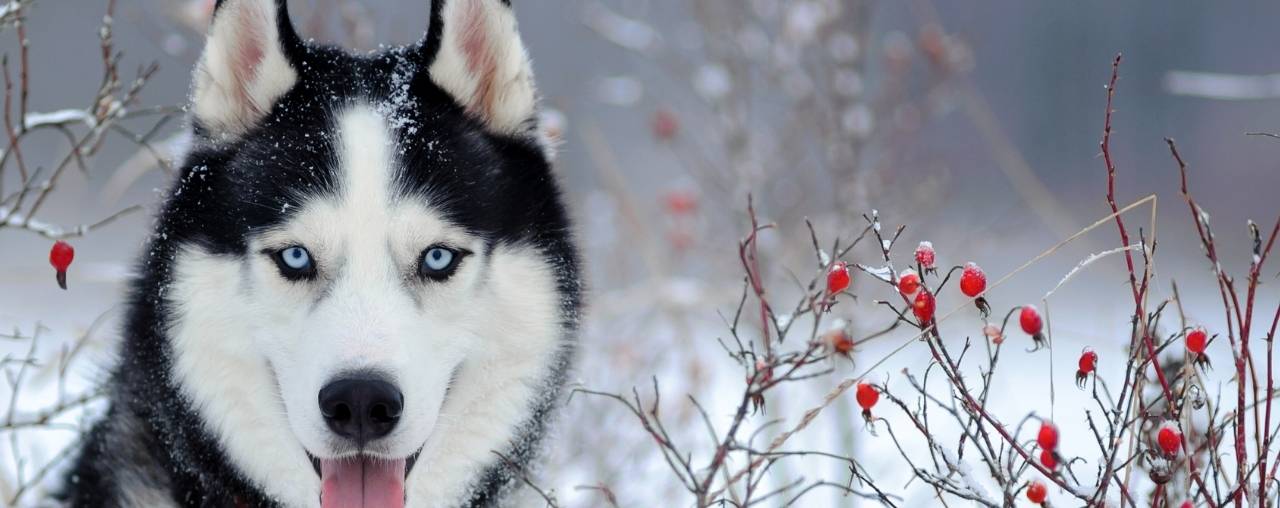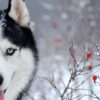Spotlight – Maine Coon Cats
Hello everyone and welcome to this spotlight edition of Val Talk’s Pets. In this edition I thought I would have a look at the gentle giant of the cat world. […]
 play_arrow
play_arrowDog and Cat Trivia Challenge 1.3 Val Cairney

 play_arrow
play_arrowChristmas Spotlight – The Siberian Husky Val Cairney

Welcome everyone to this special Christmas Eve edition of Val Talk’s Pets. Today we’ll take a look at The Siberian Husky.
As many get ready for the festivities to come and Santa Paws is going to be making his rounds, I thought when we think of Christmas, what breed of dog springs to mind. I’ve noticed that a lot of yellow labs and golden retrievers seem to be on Christmas cards and advertisements, so I think they seem to be a constant representation of Christmas. But, I also thought of another breed that I think captures a lot of the Christmas spirit and that is the Siberian husky. When we think of huskies we think of their thick fur and most often piercing blue eyes. We think of them frolicking in the snow and pulling sleds. So, for this reason, I’m going to highlight the Siberian Husky as my Christmas breed this year. As you know I have a half husky. Now, we did not in any way shape or form, seek out someone who bred a husky with another breed. I would never do that. Our husky mix came as a natural mix created by two dogs who liked each other. Natural selection if you will. We have found that Tundra exhibits quite a few husky traits, from howling, digging large holes in the summer to sit in, shutting down for a day and not eating, lying on his back and curling in a ball to name a few. So, huskies really do have some very specific traits, so let’s have a look at the Siberian Husky.

Huskies actually are a medium breed dog. I get a lot of people confusing huskies with Alaskan Malamutes. Malamutes are a large dog but huskies are not as they are meant for that speed and endurance. They also belong to the Spitz breed of dogs. I had another Spitz breed dog in the past and that was our Samoyed. A Spitz breed means that the breed within this category has a long and fluffy coat. They have erect ears and a sharp muzzle and usually a curled tail. However, Sibes, will often carry their tails straight out. So a Spitz breed dog will include Pomeranians, Samoyed, Chows, Keeshonds, Akita, and Malamutes etc. One way to sort of distinguish them is that a small Spitz breed will often look like a fox while the large Spitz breeds will look more like a wolf.
Huskies fall not only into the Spitz breed category but for showing purposes they are part of the working class of dogs, generally being considered a sled dog. It is a double coated dog so lots of shedding and brushing. They have very distinct markings, one being the mask that they have that frames their head and eyes. Their eyes are often blue, but brown is common as well and they may even have one brown and one blue eye. Generally huskies range about 20 – 23 inches at the shoulder and weigh from 35 to 65 pounds. So, let’s take a quick look at the history of the husky. According to the CKC.ca/Choosing a Dog, the nomadic people of Siberia used these medium sized dogs to pull sleds and herd reindeer. Now, this part is really interesting. Because the nomadic people called the Chukchi ( I hope that is the correct pronunciation) were so isolated, they had no other dogs to breed or cross with, so they mated their best dogs together. This resulted in having the breed strong and pure for, are you ready for this, 3000 years. Okay so along came an explorer and fur trader by the name of Olaf Swenson who became rather taken by the huskies ability to pull light loads over great distances at moderate speed. Shortly after the turn of the 20th century, Olaf brought some of the dogs to the U.S. A team driven by a Norwegian, won the All-Alaska race in 1915, 1916 and 1917. Now this is the part of history that Siberian huskies have gone down in history for. This same Norwegian, Leonhard Seppala, in 1925, drove several teams in relay, to deliver serum to avert a diphtheria epidemic in Nome, Alaska. This serum run really brought the husky to public attention and Seppala and his team made a personal appearance tour from coast to coast. Check out the movie “Balto” for this theme.

In terms of the personality of the husky, they are quite intelligent and independent. According to hillspet.com, they love human contact and need a firm gentle approach to training. And a true husky will love to run, sometimes at the expense of the humans, so huskies do get tagged as runners, meaning they like to take off. As well they are pretty good at being escape artists to fuel their wanderlust. Unfortunately, many report that electric fencing hasn’t been very effective with huskies. They are pretty good with other dogs especially their own house pack and they are not real barkers but will sound the alarm when needed and of course they do wolf howl. Now, I can attest to this because we have only heard Tundra bark less about maybe 12 or 15 times in 6 years. He doesn’t bark often, but when he does, it is bone shaking. He usually barks at wildlife that has come onto the property, especially deer. For some reason, he doesn’t like deer on his land. He will often greet us with a wolf howl or get our attention with one, which of course we mimic and he looks at us like, “seriously?” And as I said, huskies do tend to be diggers. In the summer they like to dig a nice cool hole to lie in. In terms of a guard dog, huskies do not really measure up. Their independent nature isn’t really a good attribute for being a service dog and they have really no aggression to humans or other animals in general. But, as sled dog they really excel. This is why I have to say, it always makes me shake my head, when someone comes in and they want to get a harness and tell me that their dog really pulls and they hope this will stop it. Then they tell me they have a husky! All I have to do is say, “so you know what huskies are hardwired to do right?” And when the penny drops that it is to pull and putting on a harness is just going to exacerbate that whole thing, it is quite amusing. Bottom line, I don’t recommend using a harness with a husky to remedy pulling. For obvious reasons.

So, let’s take a look at the general constitution and health of huskies. An ASPCA publication shows that huskies average 12 to 14 years. In terms of their health issues, some genetic issues can include seizures, eye defects and possible laryngeal paralysis. The good news is that hip dysplasia is not often found in the breed but it’s always a good idea to have that monitored especially if the dog is active and or working. Sled racing dogs have more issues and the owners and mushers will need to be very diligent with regards to gastric issues.
Now, I think it is important that I do talk a bit about the controversy surrounding the sled dog industry. There are several calls to action to update the “Sled Dog Standards of Care” regulations. According to the Vancouver Humane Society, “these beautiful dogs are deprived of their freedom and kept in squalid conditions.” An undercover video in February 2021, showed “sled dogs being held in cages and on chains in a barren yard at a kennel operated by a Whistler based sled dog tour company.” Now, this is not the only sled dog operation that has been sighted. It has become somewhat common that the sled dog tour company industry has been significantly sighted for animal cruelty. Now, I must make it clear that although this is a huge problem, it is not every company. There are definitely companies out there that respect and treat their dogs with care and kindness, but as we know, there are always those that exploit when money is involved. So, if you wish to partake in a sled dog excursion, make sure you really do your homework.

Let’s also talk briefly about the Iditarod Trail Sled Dog Race. So, the Iditarod is an annual long-distance sled dog race. It runs in early March from Anchorage Alaska, to Nome Alaska. It takes about 8 – 15 days to cover the distance. The Iditarod began in 1973 and is a highly competitive race. The Iditarod is a grueling race for the human musher and the dogs. According to Sled Dog Action Coalition at least 136 dogs have died in the Iditarod. PETA in particular believes the race to be exceptionally cruel where dogs are vomiting, frostbitten, exhausted, ill and injured. Although several breeds of dogs run this race, most are the Alaskan Husky, which is a mixed breed of Siberian husky stock. Over 1000 dogs have entered each year and many believe that the Iditarod is low in comparison to deaths in human athletes participating in auto racing and contact sports. But, the issue of choice does become a factor here. So, again, there are always two sides to every story, but one we should always strive to know.
So, in terms of our friendly, and affectionate Siberian Husky, they make great pets and love being part of a family pack and are very good with children and other pets. Yes, they can be runners and diggers, so it’s best to have figured out a good way to keep your Sibe contained. Make sure they get a real good run a few times a week and if they haven’t been very active, Huskies are very good at regulating their stored calories. Sometimes they have enough stored calories so they will regulate themselves by consuming only a few calories or skipping a meal.
I think the Siberian Husky is a lovely representation of Christmas. Their love of the snow, frolicking and playing and being a part of a family pack, just sets them up for being the perfect model on a Christmas card or Christmas morning photos. So, if you have a Sibe, take some photos this Christmas and share them on my website, I would love to see them. Big hugs this Christmas Eve to all the fur kids and I hope Santa paws is very generous. I know he will be at my house. So from myself and everyone here at Val Talk’s Pets, we’ll be talking again in 2022!

Tagged as: Siberian Husky, Family Dog, pet health.
Hi everyone, and welcome to Val Talk’s Pets, the forum for pet parents and enthusiasts alike. So, I have been working in the pet industry now for almost 10 years and, on a daily basis, I handle a lot of issues and questions arising from pet parents. I am not a veterinarian but I do have certifications in Canine, Feline, Small Animal, Fish and Herptile and Avian Health and Nutrition from the University of California, Davis Extension, the Vet College.
Val Cairney November 26, 2021
Hello everyone and welcome to this spotlight edition of Val Talk’s Pets. In this edition I thought I would have a look at the gentle giant of the cat world. […]
Val Cairney August 29, 2025
Val Cairney August 15, 2025
For the price of a coffee, or more if you are feeling generous, you can help keep this podcast going & growing. Please visit my ko-fi page to make a donation. Thanks!
all rights reserved - Val Talks Pets - 2024